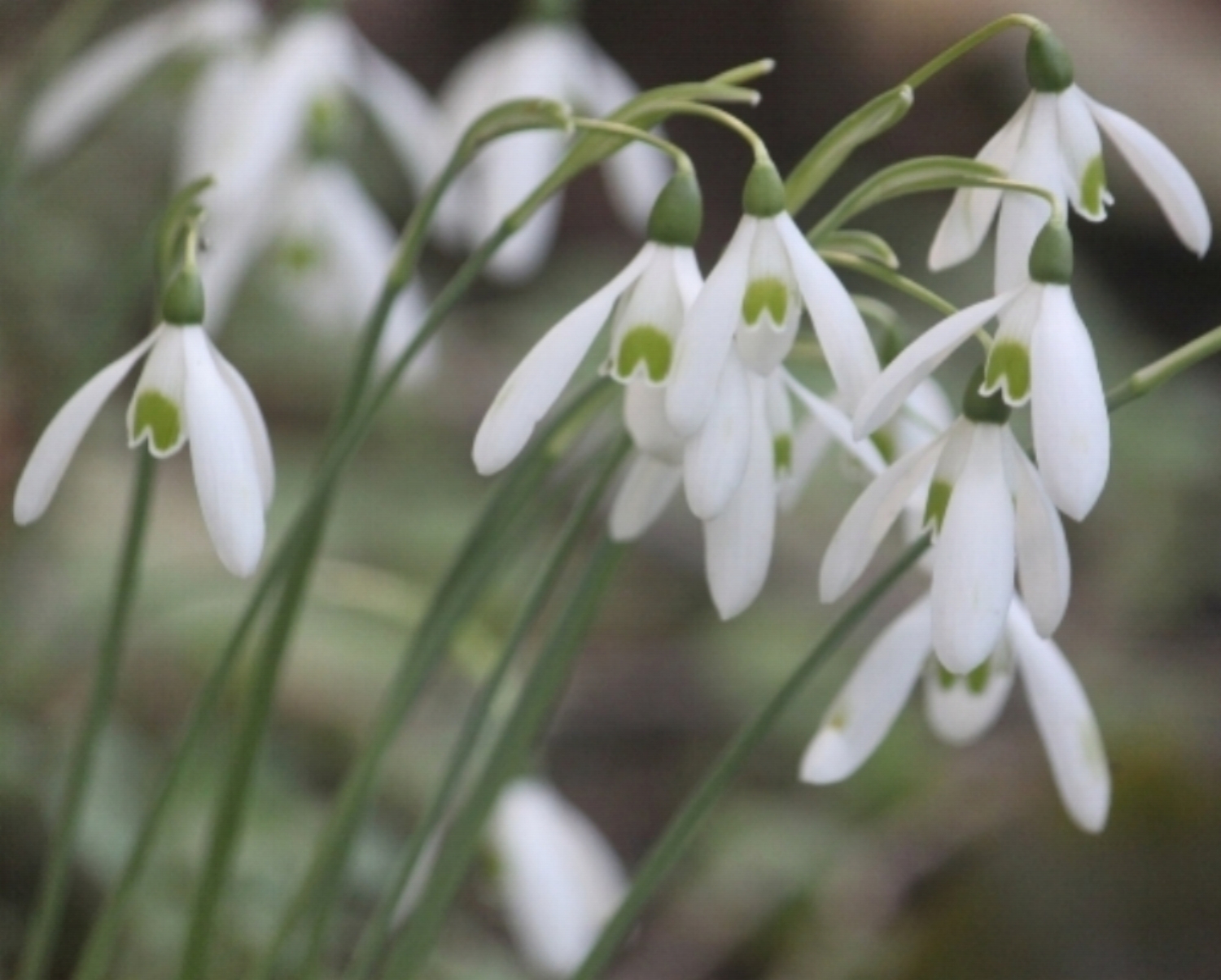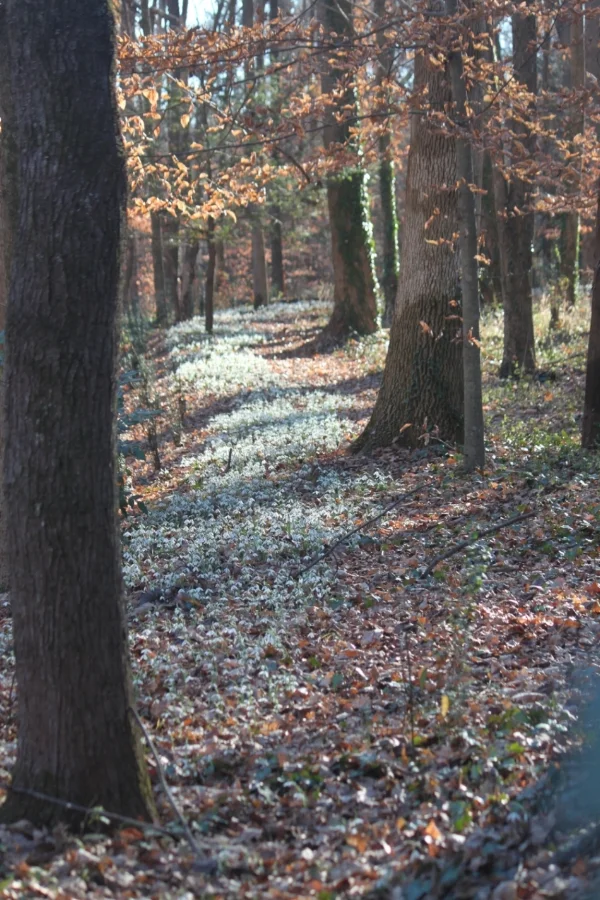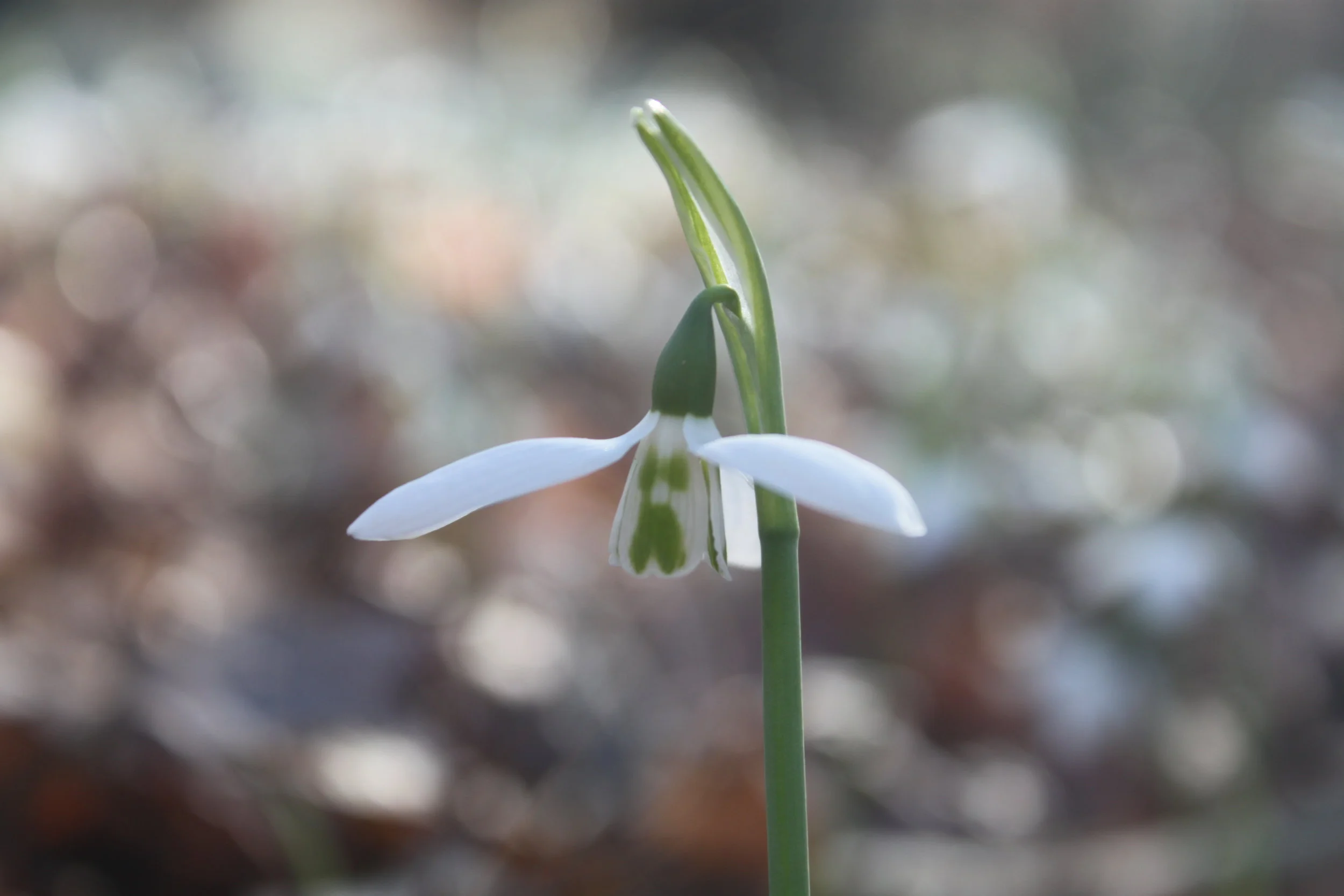Fall Snowdrops
Galanthus elwesii var. monostictus
We had perfect weather for our snowdrop walk in late November. The only problem was that the snowdrops were not at a peak. This week they will be at their 2018 peak, because no two seasons are alike and this year they were slow to open.
Galanthus reginae-olgae
Galanthus peshmenii
We have three species of galanthus in bloom now: the early flowering Galanthus peshmenii, and G. reginae-olgae, both of which had flowers in late October. Several weeks later we saw the tips of G. elwesii var. monostictus and now they are fully open.
I first obtained this form of snowdrop just after Thanksgiving in the late 1980’s when I purchased a package labeled “snowdrops” on sale at The Farmers Exchange (now Southern States) in Hillsborough. I planted the bulbs under the metasequoias and expected to see flowers in mid-winter. That first year, I saw nothing but leaves, but the following year I was shocked to see flowers in late fall. At that point in my gardening life I knew nothing about fall blooming snowdrops. When the original plants multiplied into clumps I decided to see if they would grow at the edge of the woods.
By this time, 1998, we had begun to clear the area just below the aster border and I had space with large trees but little undergrowth. The bulbs quickly multiplied into clumps with many flowers, so in 2003 I imagined the woods full of snowdrops and began dividing and replanting them about a foot apart, one bulb to a hole, at the northeast corner of that section. Year after year, with my gardening helpers we divided the largest clumps until we declared The Snowdrop Woods full. Following that we did a mass planting of this same form of Galanthus elwesii at the top of one of the ridges where the land had been terraced for erosion control in the 1930s, so in 2009, we planted the ridge near our cyclamen walk. After that we planted across the slope above the ravine between the western edge of our property and woodland garden. And last winter, 2017, we put more than 4,000 bulbs on the southernmost ridge, above the flood plain. By this time, we realized we had many forms of this snowdrop, which leaves us crawling along all of the plantings to look for “different” ones—those with faces, or more than one mark on the cup of inner tepals (petals).
We have a new planting of snowdrops with faces (3 years old) in an entirely different section of the woods, which we call Holly Ridge, and are still waiting, more or less patiently, for them to increase enough to divide. Before these snowdrops finish blooming, we will have other species and varieties in flower and we look forward to seeing at least some galanthus until late February or early march. No, I will not cover the entire woods with snowdrops, but I am not finished yet!





